Chmod Command In Linux To Change Permissions
Chmod command is used to change the permissions of files and directories in Linux.

Chmod command in linux to change permissions. Chmod stands for change mode. Setting File Permissions in Command Line. It allows the permissions to be changed in either Symbolic form or in numerical form.
Access permissions specify whether a user account or group can read, write, or execute a given file and directory. In the following list, each line shows a group of calls that are equivalent. Lastly, we will discuss modifying permissions in the Linux command line.
In my previous blog post I discussed how Linux file permissions work, and now I am going to discuss how to change permissions using chmod. Using the command, we can set permissions (read, write, execute) on a file/directory for the owner, group and. To make a file readable and writable by the group and others.
Read (`r'), write (`w'), and execute (`x'). In this tutorial, we will discuss how to change file permissions in Linux using chmod command. There are two basic ways of using chmod to change file permissions:.
The below character references are used with chmod command to identify the Linux users/Linux groups/world (other Linux users) to whom the new permissions apply. To change permission of only files under a specified directory. Conclusion # You successfully learned how to use chmod command to set or change the file and directories permissions using either the symbolic or numeric mode.
The request is filtered by the umask.The name is an abbreviation of change mode. Using Chmod Command to Change File Permissions As all Linux users, you will at some point need to modify the permission settings of a file/directory. Say you do not want your colleague to see your personal images.
The exact command is. The name chmod is short for “change mode”. The letter or letters representing the owner (u), group (g), other (o) or all (a) followed by a + for adding permissions or a – for taking away permissions and then the letter for the permission (r for read, w for write and x for execute).In the above example, I added the execute permission for all users.
The file or directory owner;. Each permission may be `on' or `off' for each of three categories of users:. It may happens many times in a day, it depends on your environment size and team size.
These flags are called file permissions or modes, as in "mode of access." The command name chmod stands for "change mode." It restricts the way a file can be accessed. You might have heard of chmod 777. To change the permissions of a file, one uses the chmod command, with the following syntax:.
The chmod command allows you to change the permissions on a file using either a symbolic or numeric mode or a reference file. The chown command can be used to change user and group permission. To change file access permissions you need to use the chmod command.
Chmod command is used to change access permission of files and directories in Linux operating systems. Both forms can be interchangeably used. The chmod command in Linux/Unix is abbreviated as CH ange MOD e.
Chmod command allows you to alter / Change access rights to files and directories. File access permissions can be modified via the chmod command. It could be a single file or multiple files.
In Unix and Unix-like operating systems, chmod is the command and system call which is used to change the access permissions of file system objects (files and directories).It is also used to change special mode flags. Rw-, r--, r-x, and so on. More Information on.
This Linux option allows you to change permissions or owners of all files and subdirectories inside a specific directory. The chmod command lets you change the permissions for a Linux file. Chmod has the recursive option that allows you to change the permissions on all the files in a directory and its sub-directories.
The chmod command can be used with octals (as. Change permission on all the files in a directory recursively. The first is using symbolic arguments, the second is using numeric arguments.
The owner of a file can change the permissions for user (u), group (g), or others (o) by adding (+) or subtracting (-) the read, write, and execute permissions. The operator determines whether to add (+), remove (-) or explicitly set (=) the particular permissions. File Permission is given for users,group and others as, SYNTAX :.
You can change the permissions given to a file using the chmod command. In Linux, you can easily change the file permissions by right-clicking the file or folder and select “Properties”. -rw-rw-r-- mik mik assgn1_client.c COMMAND:.
Linux file permissions are determined by who owns the file and the visibility of that file to various users. $ chmod 777 sample.txt. On Unix-like operating systems, a set of flags associated with each file determines who can access that file, and how they can access it.
The permissions control the actions that can be performed on the file or directory. Donotprint /donotprintThe find command can be used to find files and directories. How to Use the chmod Command in Linux Command Syntax.
Chmod command is useful to change permission for Files and folders in Linux/Unix. How to Change Groups of Files and Directories in Linux. There are three sets of permissions.
One of the most popular options that you can combine with chmod and chown is -R (Recursive). The Linux command to change permissions on a file or directory is chmod, which we like to read as change file mode. Chmod Modifies File Permissions.
This command is used to view your files with what permission they are. Owner, group, and everyone. We can use two ways of calling chmod, symbolic or octal notation.
Option is an additional command to change the output of a command. To change the permissions — or access mode — of a file, use the chmod command in a terminal. The references are shorthand (u, g, or o) for each class.
The command can accept one or more files and/or directories separated by space as arguments. In Linux, who can do what to a file or directory is controlled through sets of permissions. It has -R or –recursive option that change files and directories recursively.
$ chmod 0 sample.txt Write by anyone $ chmod 002 sample.txt Execute by owner only $ chmod 100 sample.txt Execute by group only $ chmod 010 sample.txt Execute by anyone $ chmod 001 sample.txt Allow read permission to owner and group and anyone. If no references are specified it defaults to “all”. Now, let us see how chmod command can be used to change the access mode of a file.
A command line / terminal window ( Ctrl + Alt + T or Ctrl + Alt+F2) A user account with sudo privileges (optional) A Linux system. As Linux administrator, we always use chmod command to change file permissions in Linux. How to Set File Permissions Using `chmod' Files and directories in Unix may have three types of permissions:.
Chmod 775 file chmod 776 file chmod 777 file chmod 774READ MORE. Following color coding is used to describe the content better in applying chmod command in Linux. The syntax is as follows:.
Chmod has two operating modes:. The MKS version of chmod tries to handle options in a way that parallels the POSIX approach. Below is a list of numerical permissions that can be set for the user, group, and everyone else on the.
There will be a Permission tab where you can change the file permissions. We will explain the modes in more detail later in this article. Discover chmod and chown for configuring this.
Before explaining the syntax of the chmod command, you need to look at the cryptic way Linux reports file permissions. The first 7 sets the permissions for the user, the second 7 sets the permissions for the group, and. File/Directory permission is either Read or Write or executable for either user or group or others.
1) Change permissions using Numeric (octal) method. Chmod -R MODE DIRECTORY. The chmod command in Linux is used to change file and directory permissions using either text (symbolic) or numeric (octal) notation.
Actually, chmod Command in Linux plays a greater role to keep all the files and directories of the system safe and secure so that no unauthorized person can change, modify or delete content of any files or directories. Users can simply modify file permissions using the chmod (change mode) command. To change file and directory permissions, use the command chmod (change mode).
The basic syntax is:. We can modify these permissions with a simple command called “chmod.” This command stands for Change/Modify and it is how we will work with permissions on files and folders in the command line. Chmod 0000 chmod o=s chmod 00 chmod g=s chmod =s chmod 4000 chmod u=s chmod =h chmod 6000 chmod a=s chmod ug=s chmod =hs Note:.
The chmod command allows you to change the permissions on a file using either a symbolic or numeric mode or a reference file. Only the object owner, superuser or root account can change the permissions of a file/folder. Other people in the same group as the owner;.
It takes the following syntax:. The chown command stands for “change owner”, and allows changing the owner of a given file or folder, which can be a user and a group. The general syntax to recursively change the file’s permissions is as follows:.
We explained the chown and chmod command for Linux and Unix users. Chmod u=r assgn1_client.c AFTER:. To assign reasonably secure permissions to files and folders/directories, it's common to give files a permission of 644, and directories a 755 permission, since chmod -R assigns to both.
To recursively operate on all files and directories under a given directory, use the chmod command with the -R, (--recursive) option. This can be achieved by changing file permissions. I strongly suggest that you read man pages by typing the following man.
$ chmod 444 sample.txt Allow everyone to read, write, and execute file. In this file example, sets read and write permissions for user and group:. -r--rw-r-- mik mik assgn1_client.c Before :.
In the terminal, the command to use to change file permission is chmod. In this article, I will take you through 11 Popular Unix/Linux chmod command examples to Change File Permissions. Chmod -R will change all the permissions of each file and folder under a specified directory at once.
Changing file/directory permissions with 'chmod' command. $ chmod ug=rw /var/www/html/data.php See “how to use change user rights using chomod command” for more information. $ chmod OPTIONS MODE filename Only the root user or a regular user with sudo privileges can change file or directory permissions.
$ chmod 777 -R /path/to/Dir To assign reasonably secure permissions to files and folders/directories, it's common to give files a permission of 644 , and directories a 755 permission, using the find command and a pipe we can target just files. The command can accept one or more files and/or directories separated by space as arguments. We can use the 'chmod' command which stands for 'change mode'.
To change permission using the Linux chmod command we have to follow some syntax and rules. Chmod ugo+rwx foldername to give read, write, and execute to everyone. Chmod -R 755 directory chmod 777:.
The command that executes such tasks is the chmod command. If it’s in the same directory, you may need to use chmod command with file name and new file permission to be applied. Below is the command's general structure:.
Chmod can be used in 2 ways. To change directory permissions for everyone, use “u” for users, “g” for group, “o” for others, and “ugo” or “a” (for all). Chmod a=r foldername to give only read permission for everyone.
The chmod command stands for “change mode”, and allows changing permissions of files and folders, also known as “modes” in UNIX. Anything that is removed is swapped with a -, which lets you form various combinations of values and relative permissions:. How To Change File Permissions In Linux Using ‘chmod’ Command The highly productive Linux system offers various levels of permission to ensure that the user has enough ways to interact with files and directories.
NDG Linux Essentials 2.0 Chapter 17 Exam Answers Which of the following commands set “other” permissions on file to r-x?. What is Linux chmod Command?. Let’s change the assgn1_client.c permission so that the owner cannot write(w) in the file but can only read it.
Linux grants three different types of permissions — read, write, and execute — for three different scopes:. Chmod is the command used to change the permissions of an object, and is short for “CHange MODe”. Use sudo, the find command, and a pipemill to chmod as in the following examples.
The Linux chmod command can be used to change the existing permissions on a file. One set for the owner of the file, another set for the members of the file’s group, and a final set for everyone else. Chmod who = permissions filename Where who is any from a range of letters, each signifying who is being given the permission.
The chmod command allows you to change the permissions of files using symbolic or numeric mode. Permissions (access modes) can be changed with the chmod command by using some operators (-, + or =) to assign permissions (r, w or x) to a specific user (u, g, o or a).

Some Helpful Linux Commands Recently For A Coding Challenge I Was By Kate Schlunz Medium
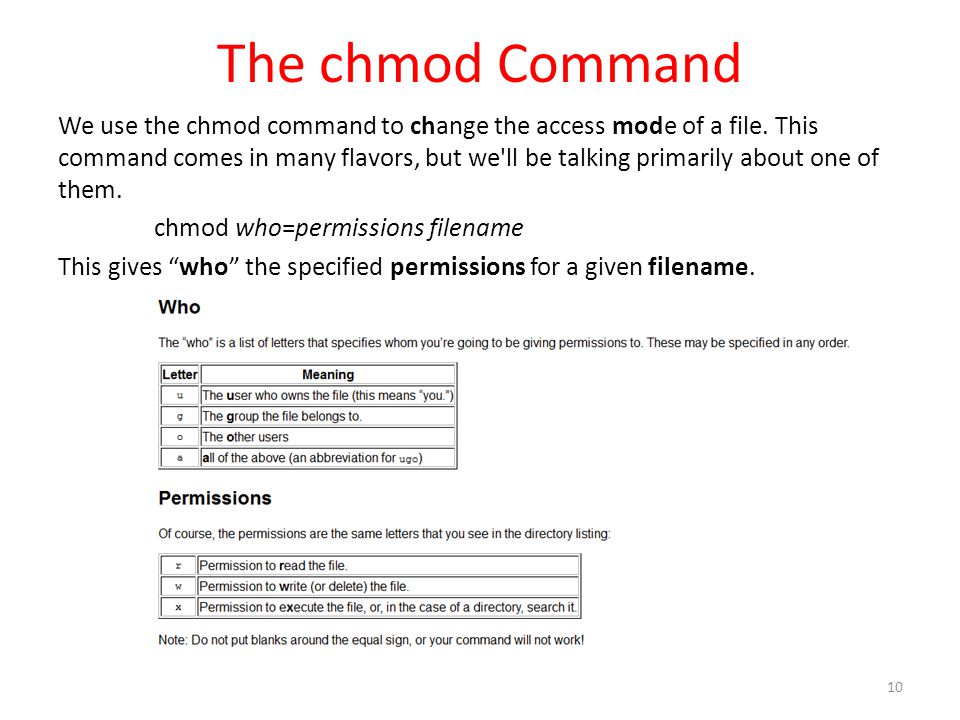
Write Access Chmod Permissions

Linux Permissions Guide Plex Support
Chmod Command In Linux To Change Permissions のギャラリー

How To Change Permissions Chmod Of A File Hostgator Support
/GettyImages-1021092796-ea8c63ee76f84bd5bf98c4222337fbb4.jpg)
How To Use The Chmod Command In Linux
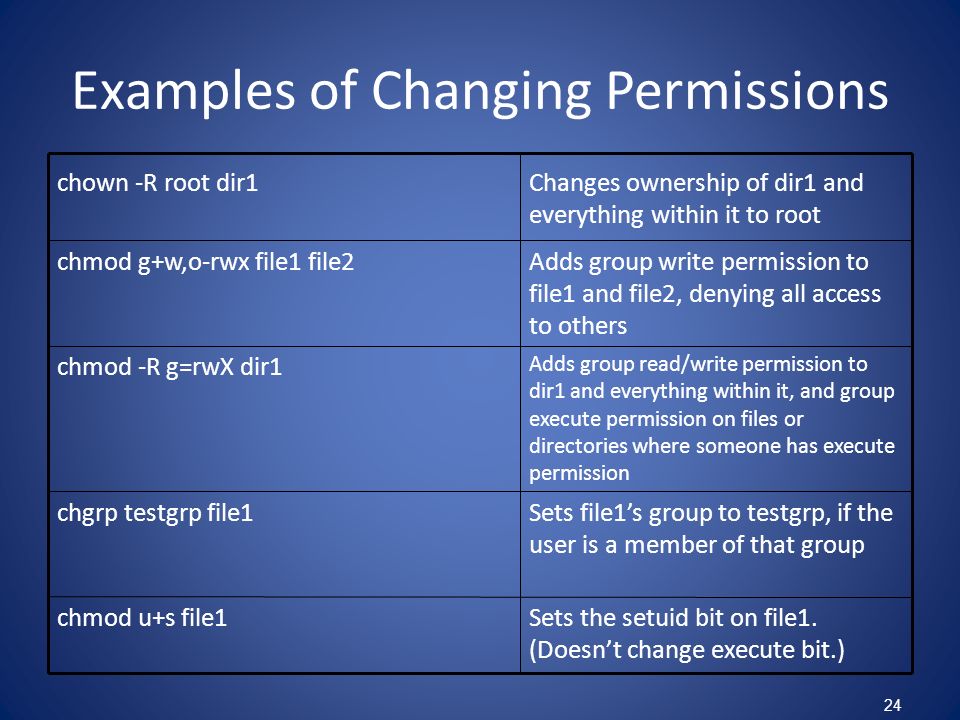
Permissions Why Use Chmod Instead Of Chmod U Rw Go R Unix Linux Stack Exchange
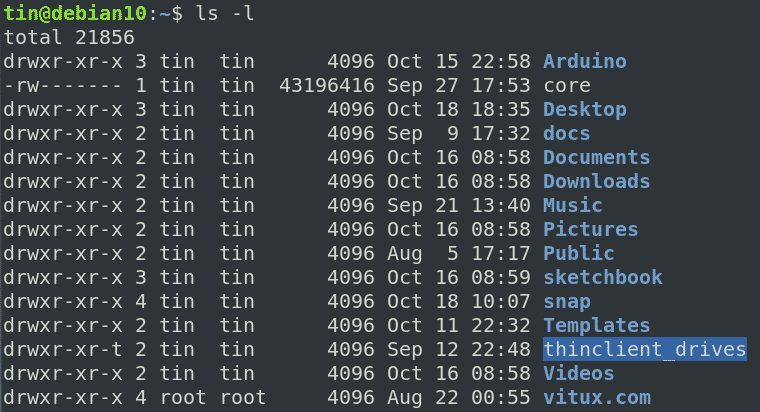
Change File Permissions Recursively Linux Linux Hint

File Permissions Linuxhowto Net

Linux Unix Permissions And Attributes Linuxsecrets
Q Tbn 3aand9gcs Trmaopb41lzfo2wl Mi6olorurkywaddbudhnw Ne1mor3ct Usqp Cau
Linux Chmod Tips
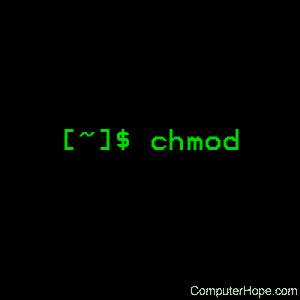
Linux Chmod Command Help And Examples
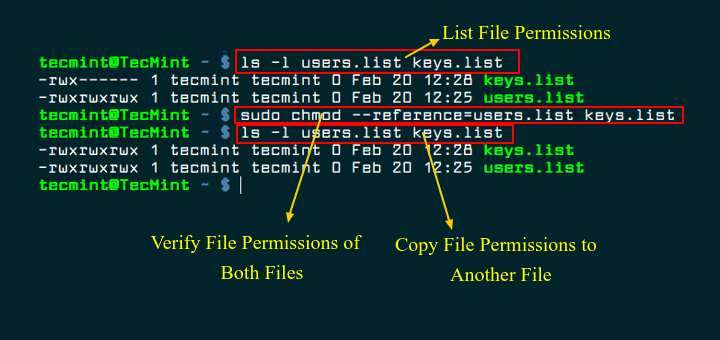
How To Copy File Permissions And Ownership To Another File In Linux

Linux Terminal File Permissions Chmod Chown And Chgrp Youtube
Chmod Cheatsheet Linux

Chmod 777 755 655 644 And More Permissions Linux Files Tutorials

What Is Chmod How To Use Chmod For Wordpress File Permissions
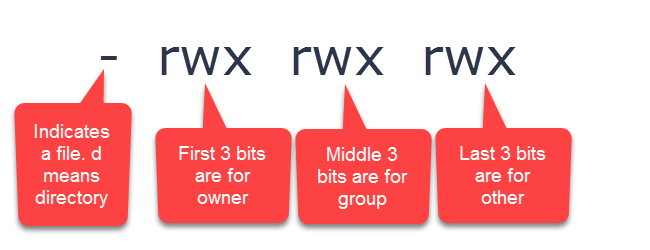
Understanding Linux Permissions And Chmod Usage

Chmod Command In Linux With Examples Geeksforgeeks
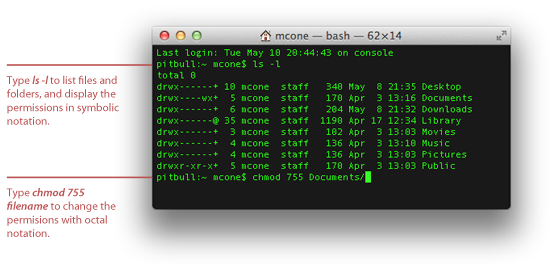
How To Set File Permissions In Mac Os X Macinstruct

9 Quick Chmod Command Examples In Linux

How To Use The Chmod Command 2 Minute Linux Tips Network World

Chmod Command In Unix Learn Unix Online Fresh2refresh Com

Ownership And Permissions

Linux Permissions Guide Plex Support

Chmod Recursive Change Permissions Recursively On Files Folders

Chmod Permission Denied Unix Linux Stack Exchange

Command Line I Can T Change Mode For Some Directories Using Chmod Ask Ubuntu
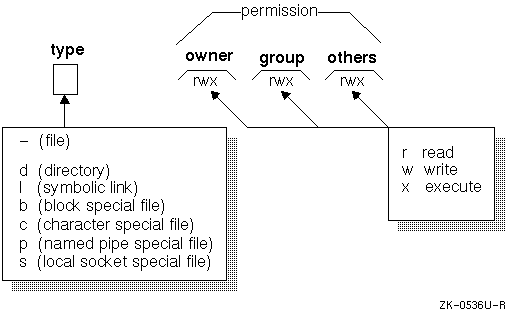
Unix Permissions

Chmod Chown Wsl Improvements Windows Command Line
Q Tbn 3aand9gcq1nsq3kxri7ryrifobs2rfobawbv4hezfw9 Ldf4feblahyn09 Usqp Cau

Javarevisited 10 Example Of Chmod Command In Unix Linux
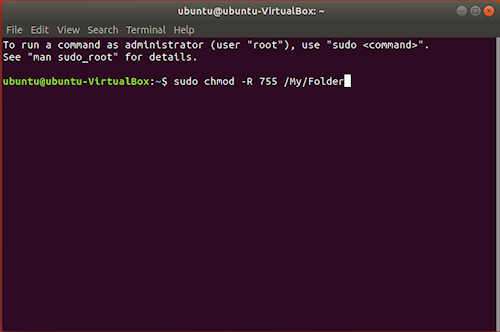
Introduction To Linux File Permissions Attributes Chmod Globo Tech

Course 102 Lecture 14 Users And Permissions

How To Change Permissions And Owners Via Linux Command Line

Modify File Permissions With Chmod Linode

How To Use Unix File Permissions To Increase Security Developer Drive

This Chmod Calculator Makes Creating Chmod Commands A Cakewalk Hongkiat

Change Ownership And Rights To Files And Folders In Linux Smashing Lab

8 Linux Chmod Command Examples To Understand It The Linux Juggernaut

How To Change File Permissions Hostwinds Guides
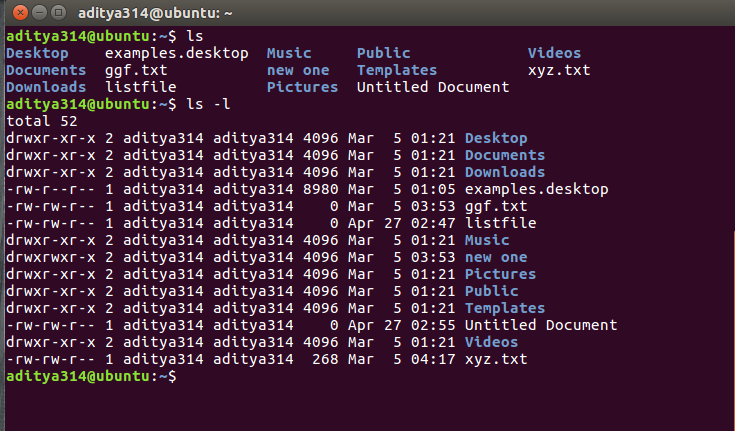
Permissions In Linux Geeksforgeeks
.png)
File Permissions In Linux Unix With Example

How To Use Chmod Command In Linux Explained With Examples
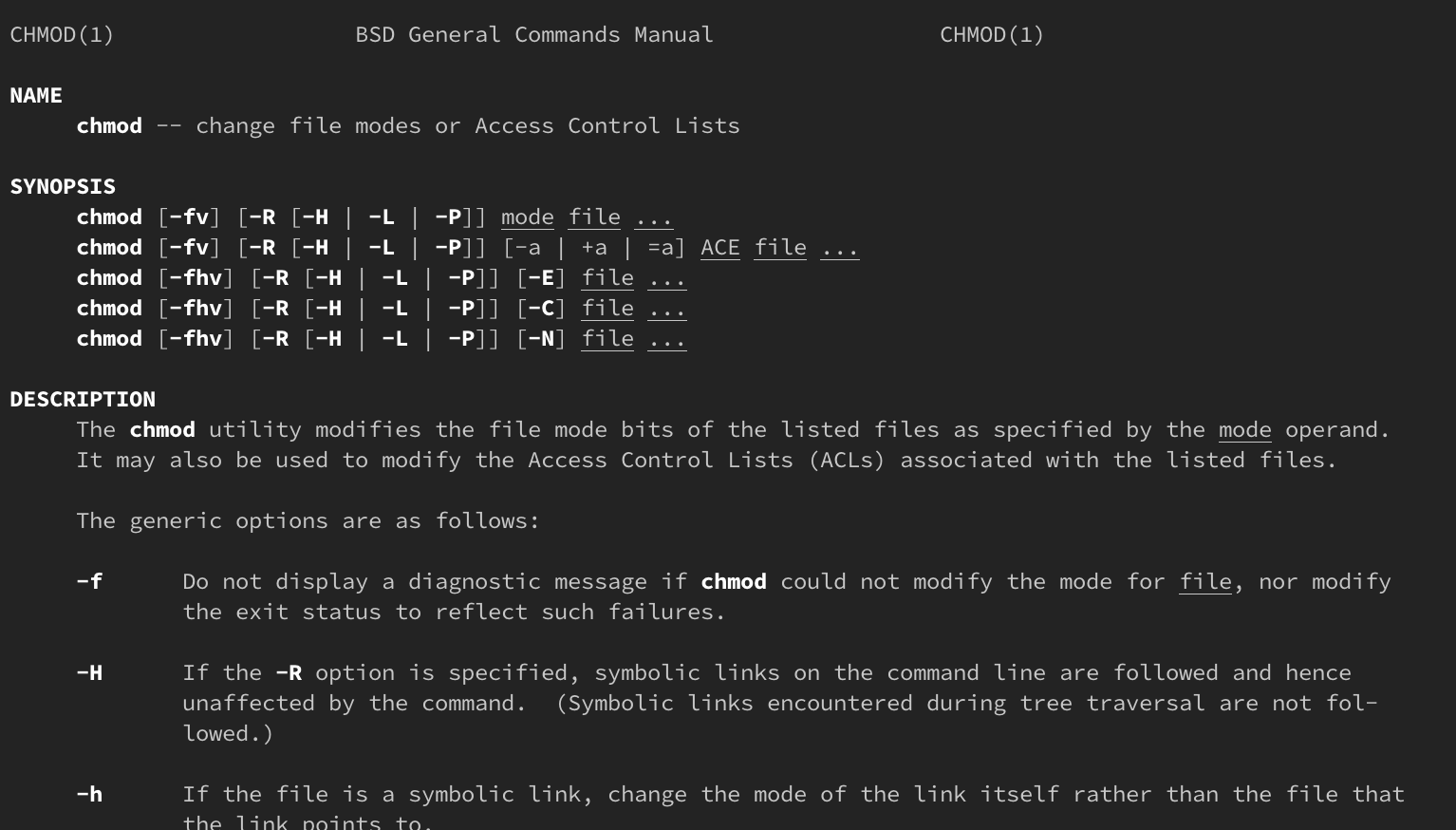
How Do Linux Permissions Work
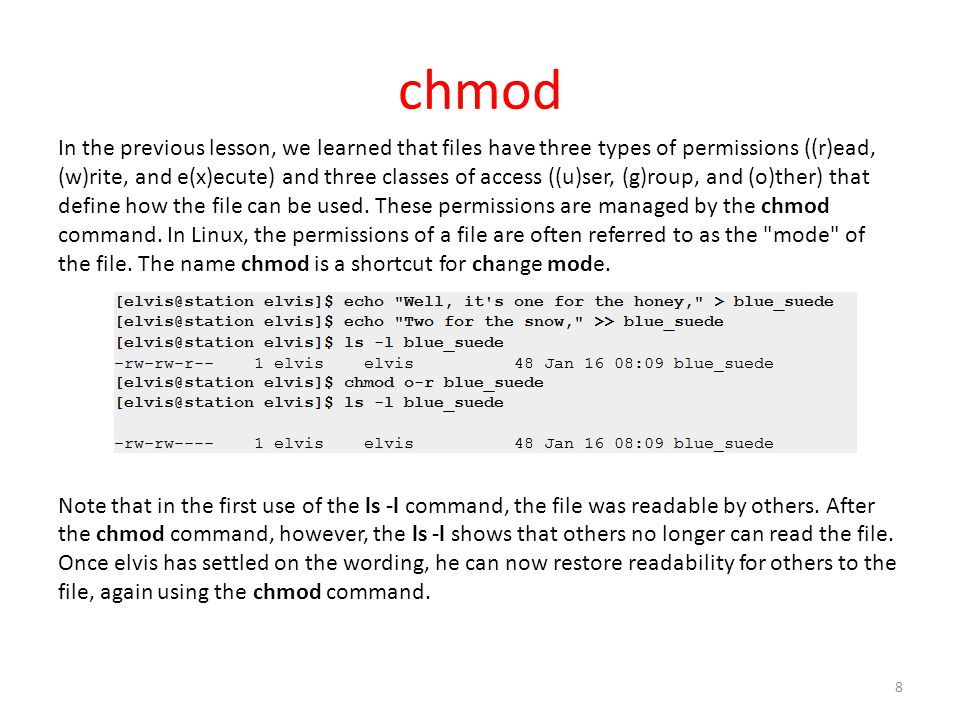
Workbook 4 File Ownerships And Permissions Ppt Video Online Download

Restore Executable Permission To Chmod Command In Linux Ostechnix

How To Change Directory Permissions In Linux Pluralsight
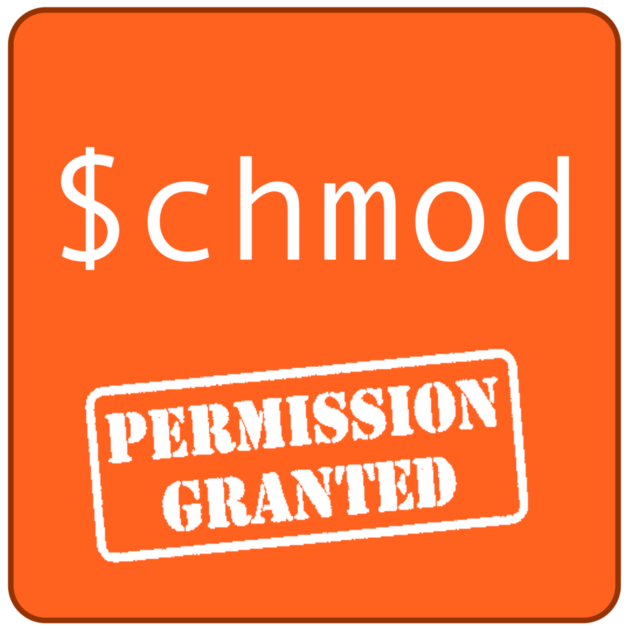
Changing File Permissions In Linux The Chmod Command By Saswat Subhajyoti Mallick Medium

Directory How Can I Change Permissions Of A Folder Including Its Enclosed Files And Subdirectories Ask Ubuntu

Linux Chmod Command Tutorial With Examples To Change Permission Of Files And Folders Poftut
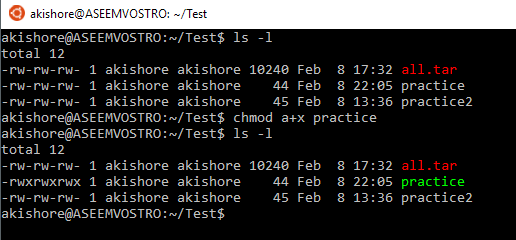
Understanding Linux Permissions And Chmod Usage

Explained How To Use Chmod Command Complete Guide Youtube

How To Use The Chmod Command On Linux
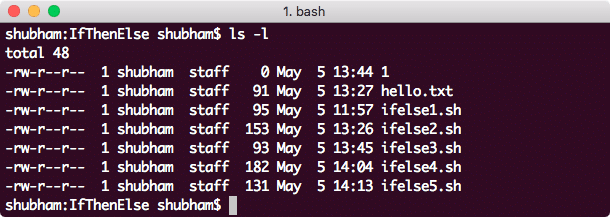
Linux Chmod Example Linux Hint

11 Popular Unix Linux Chmod Command Examples To Change File Permissions Cyberithub
Q Tbn 3aand9gcq2oq90gyu7qjtwwppsiodhgqotjbz3awrstnhczkm6hwgdiahx Usqp Cau
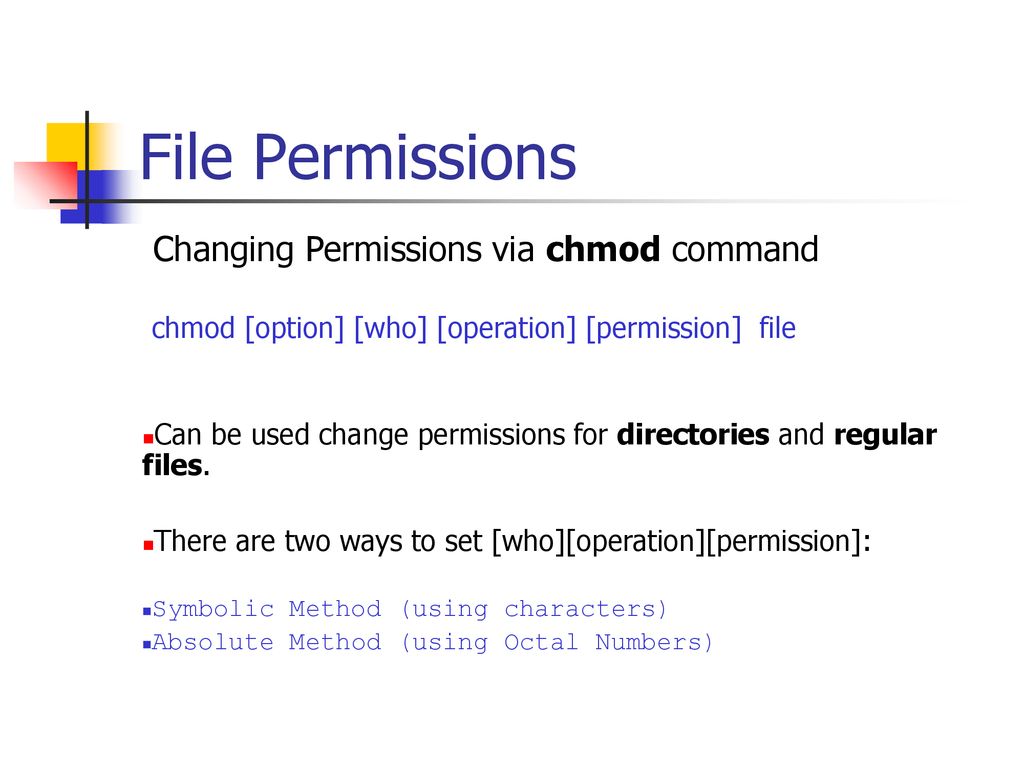
Bif703 File Permissions Ppt Download

Chmod 777 In Terminal The Command To Make All Changes Affect Every File And Folder Ask Ubuntu

How To Use Chmod And Chown Command In Linux
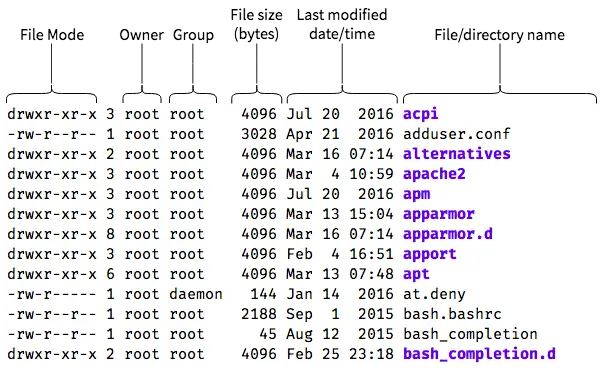
An Introduction To Linux File Permissions Boolean World

File Permissions In Linux Unix With Example

Chmod Command In Linux File Permissions Linuxize
Q Tbn 3aand9gcs Trmaopb41lzfo2wl Mi6olorurkywaddbudhnw Ne1mor3ct Usqp Cau
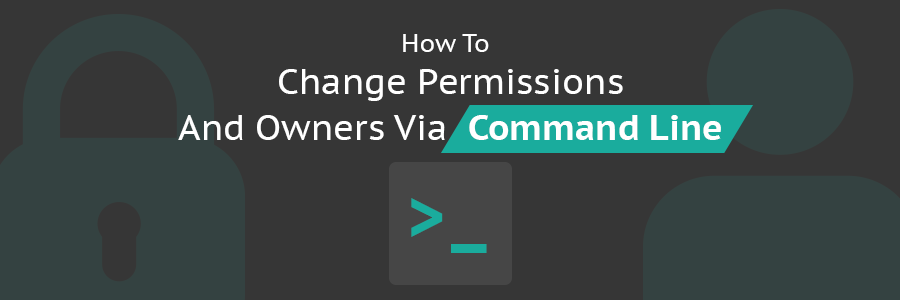
How To Change Permissions And Owners Via Linux Command Line

Linux Commands Chmod

Learning The Shell Lesson 9 Permissions
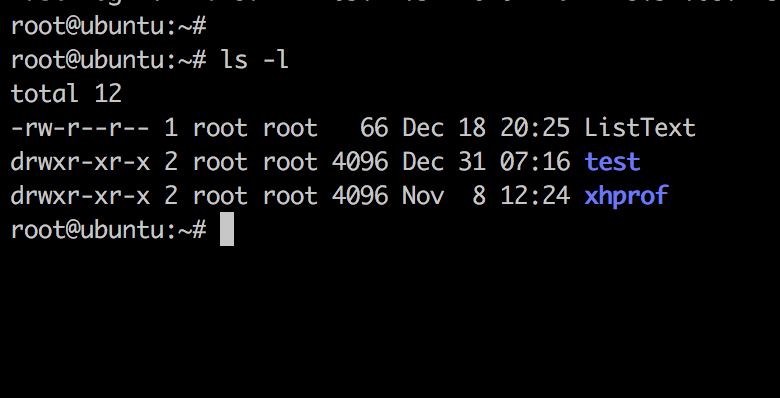
Linux Chmod Command Linuxfordevices
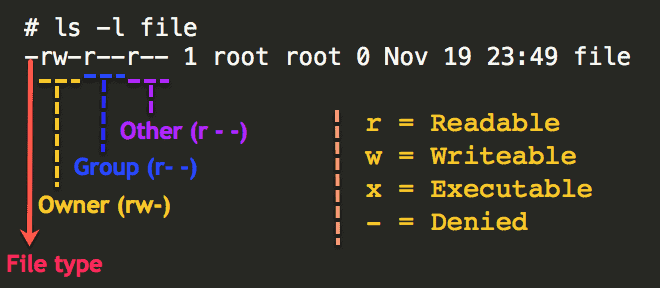
Understanding Basic File Permissions And Ownership In Linux The Geek Diary

How Do Linux File Permissions Work

How To Change Directory Permissions In Linux Pluralsight
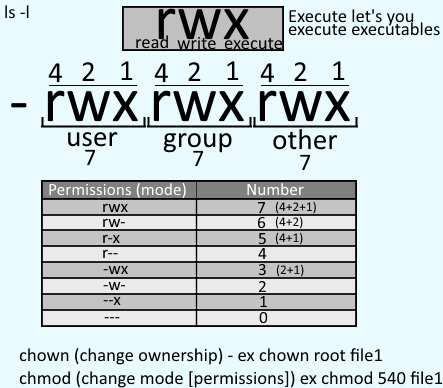
Freekb Linux Commands Chmod Change A File Or Directory Standard Permissions

Numeric Permissions Table Linux Chmod Command Linux Permissions

Working With File Permissions On Your Raspberry Pi Dummies
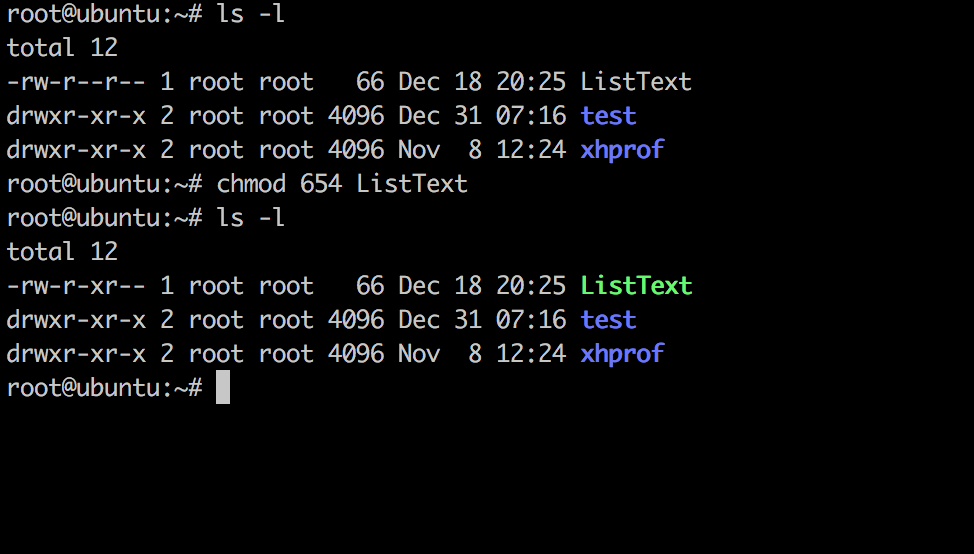
Linux Chmod Command Linuxfordevices

How To Use The Chmod Command On Linux

Change File And Folder Permission On Ubuntu Chmod Chown Command In Linux Youtube
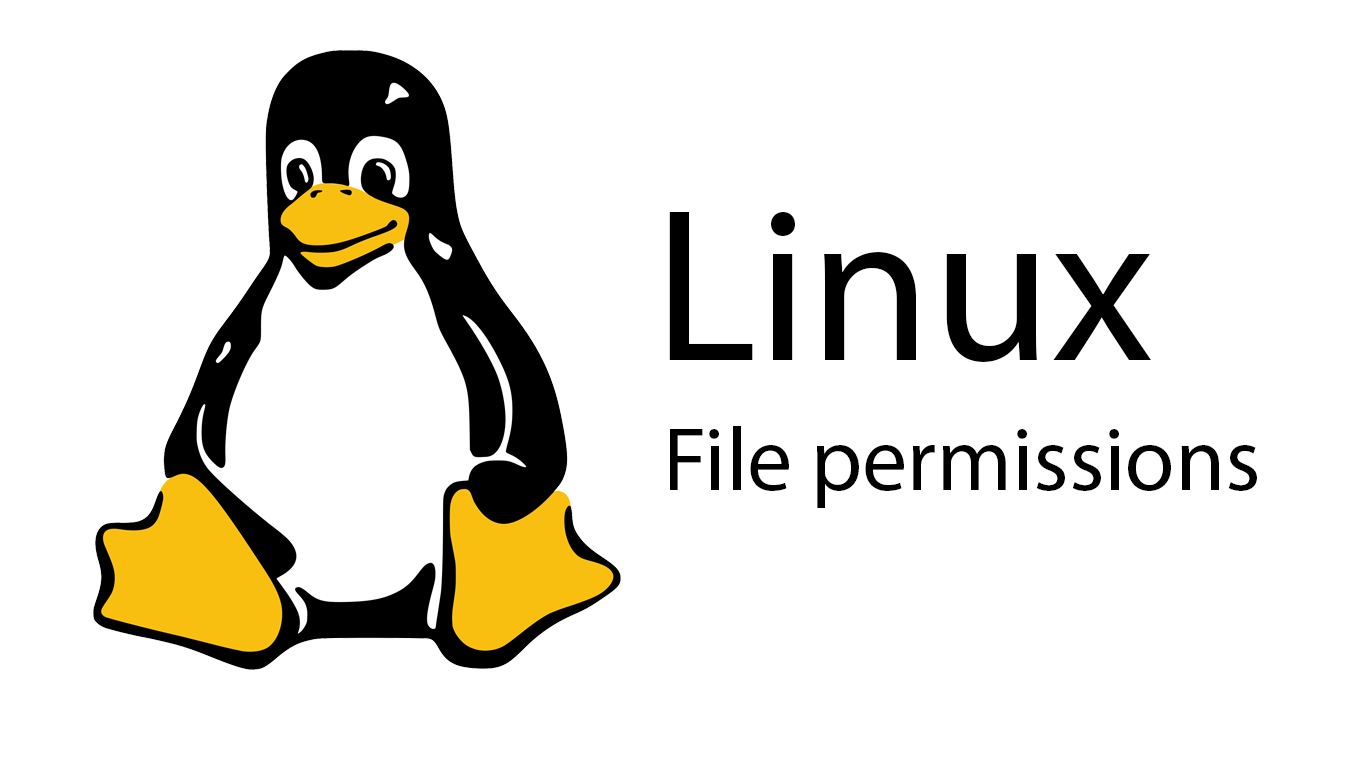
How To Change File Permissions In Linux Skillsugar

Use Of Chmod Command In Linux Devopsdex

How To Change File Permissions Recursively With Chmod In Linux

7 Linux Change Permissions Of Files Directories Using Chmod Commands Youtube

Chmod Calculator Chmod Generator Chmod Command

Chmod 777 755 655 644 And More Permissions Linux Files Tutorials

Linux File Permission Change By Chmod Command In Linux Guide For Beginners
/i7guGwCYcn-34e068e148ae4e918b29c86cd2d5740e.png)
Configuring Unix Linux File And Directory Access Rights

Jijo K Jose Jijokjose Personal Website How To Change Permission To A Folder And All Of Its Subfolders In Linux Ubuntu Terminal Jijo K Jose

Linux File Permissions Tutorial How To View And Change Permission

Chmod Wikipedia
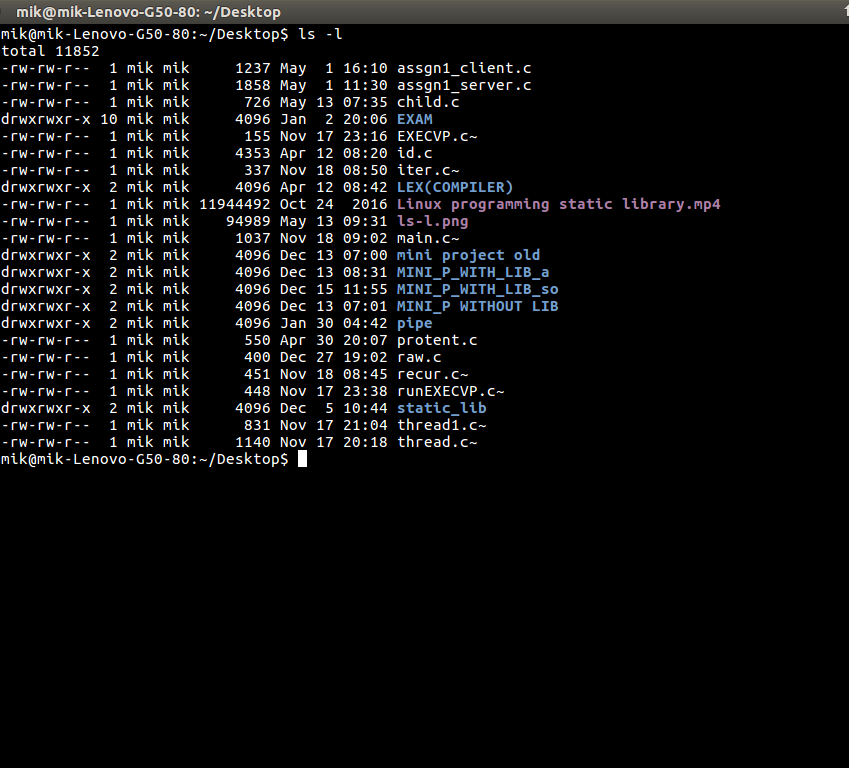
Chmod Command In Linux With Examples Geeksforgeeks
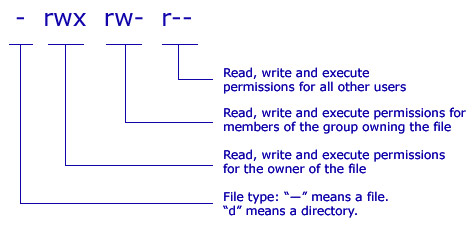
Unix Linux Os X File Permissions
.png)
File Permissions In Linux Unix With Example

Linux File Permissions Tutorial How To View And Change Permission

How To Change Directory Permissions In Linux Pluralsight

How To Use Chmod Command In Linux Explained With Examples

Linux File System Nevigation Filing System Reading Writing Linux

Solved B To Remove Myfile Ordinary File From The Paren Chegg Com

Chmod Command In Unix Unix File Permissions Chmod With Examples Chwn Command Chgrp Command Unmask

File Security

How To Change File Permissions Recursively With Chmod In Linux

How To Use Chmod Command In Linux Explained With Examples

08 Unix Linux Shell File Directories Permission Chmod Command Youtube

What Is Chmod 777

Linux File Permission Javatpoint

Linux Chapter 3 Permission Management Commands Change File Permissions Chmod 777 Root A Programmer Sought



